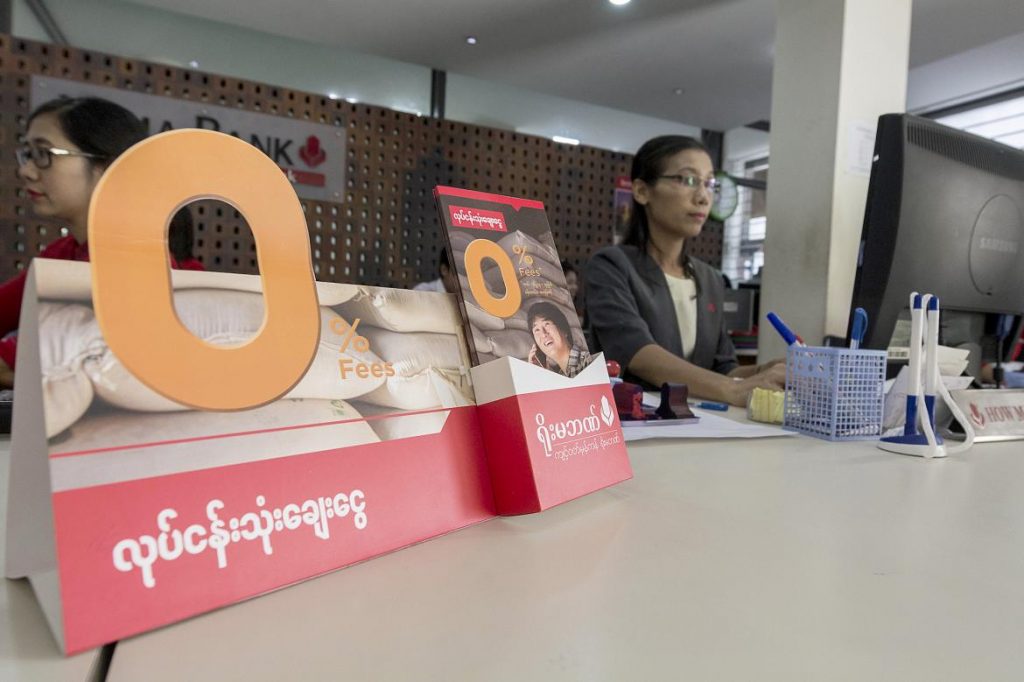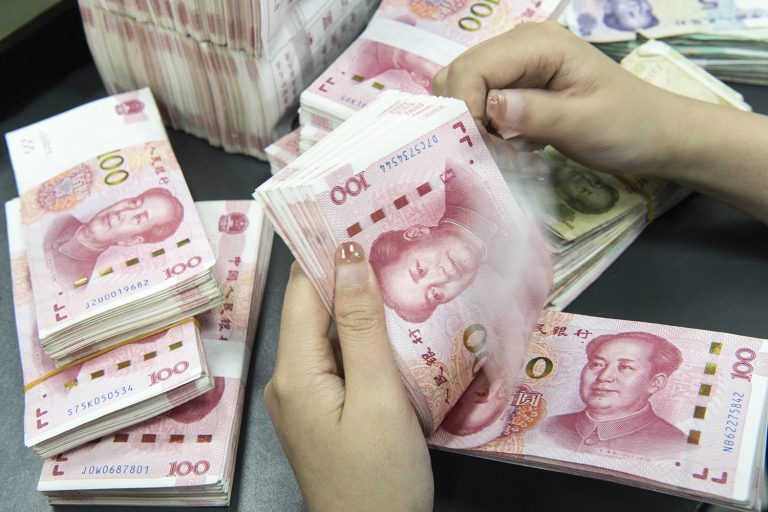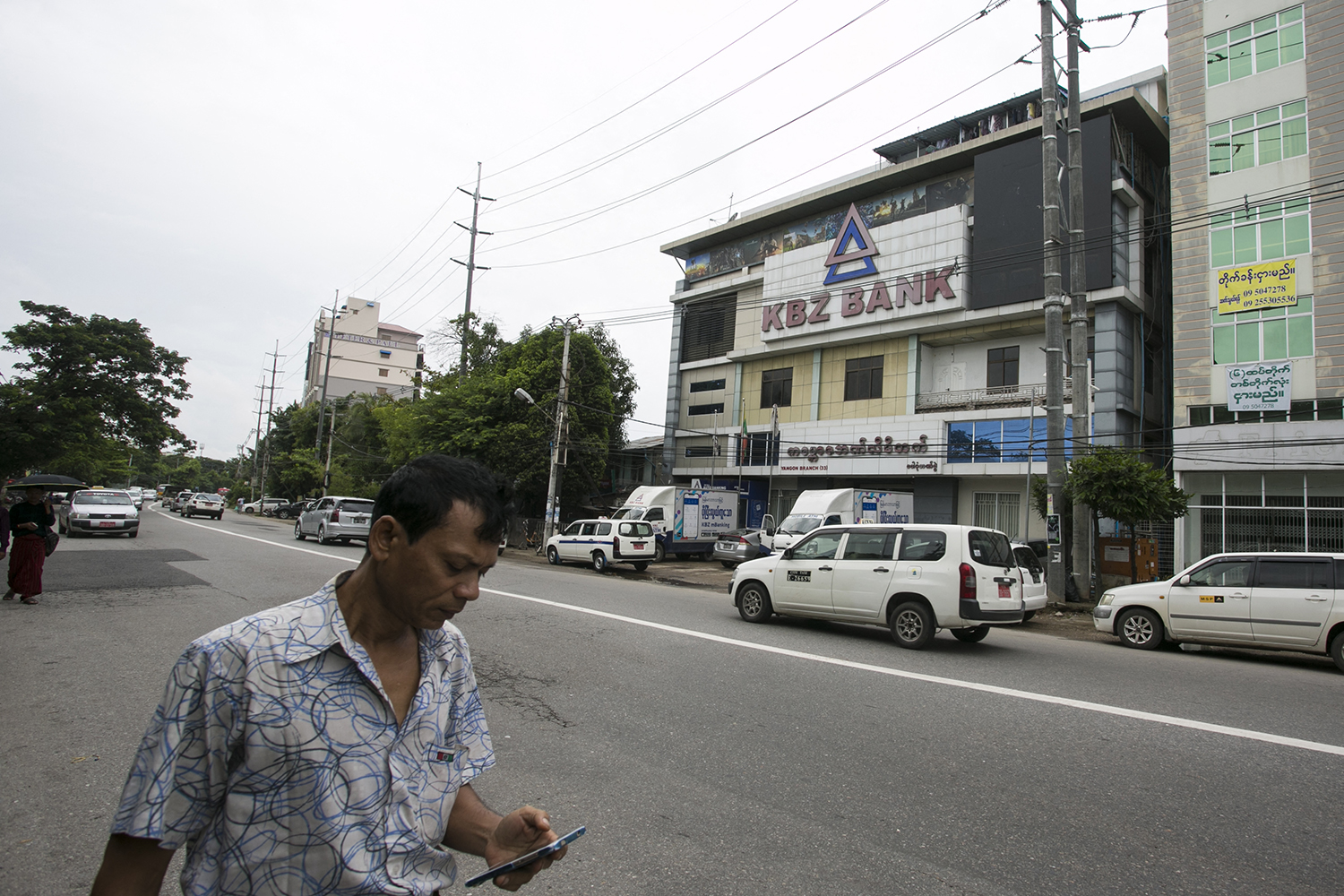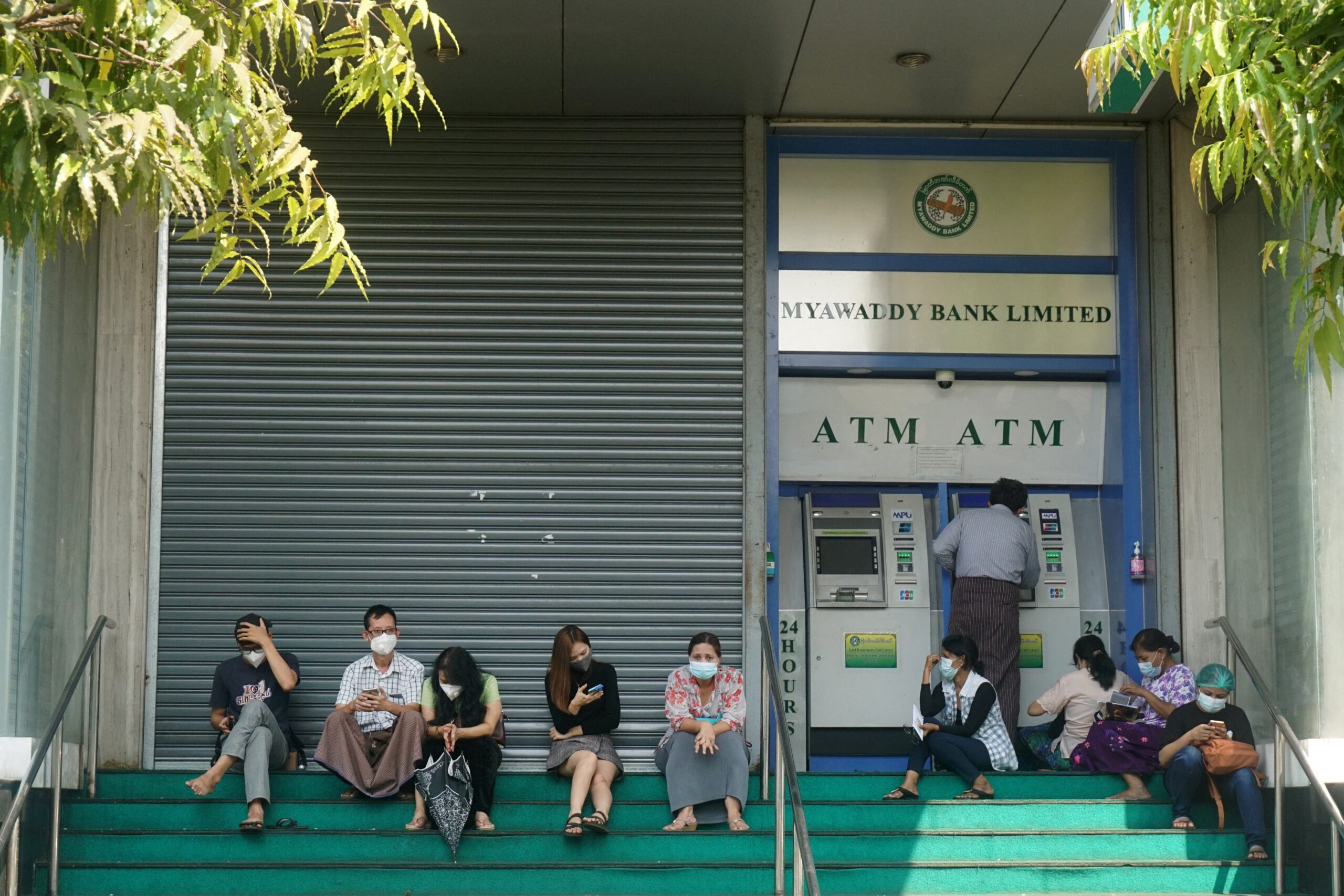Strict rules introduced after the financial crisis are holding back the financial sector but the independence of the central bank could be a barrier to the NLD’s reform plans.
By PETER JANSSEN | FRONTIER
AT 3pm each weekday, Myanmar’s private banks shut their doors to customers. The early closing hours are needed so that they can collate their daily transactions and send them off to the Central Bank of Myanmar before the evening deadline.
Several of Myanmar’s larger banks have invested heavily in database computer systems such as Oracle to keep track of their banking transactions nationwide and compile them.
Earlier this year, with assistance from the Japan International Cooperation Agency (JICA), the central bank introduced a clearing and settlement system known as CBM-Net. The new system means many banks can make their end-of-the-day reports to the central bank online, as long as there are no communications or power outages.
But not all of Myanmar’s 29 banks have been able to build up their IT systems yet. “Each day we have to prove we are keeping in line with the central bank’s requirements of liquidity and capital adequacy ratio. Normally we fax the documents, or even send them manually,” said U Hla Nyunt, deputy managing director of Global Treasure Bank PCL, a medium-sized private bank.
Support more independent journalism like this. Sign up to be a Frontier member.
The daily reporting is unique to Myanmar. In other countries banks need to provide updates on operations to their central banks on a weekly or monthly basis. But this is Myanmar, which has its own unique and turbulent financial history – a legacy that will pose significant challenges for the new government as it seeks to build on the financial sector reforms of recent years.
Myanmar’s long-suffering citizenry had a major part of their cash savings wiped out by three demonetisations under former military strongman U Ne Win, who cancelled kyat currency notes in 1964, 1985 and 1987 and provided limited compensation.
After Ne Win was removed, private banks were encouraged. But the collapse of unregulated, Ponzi-like private investment schemes in the second half of 2002 prompted a run on licensed banks. At the same time, the government introduced measures to clean up money laundering at the banks and comply with US law. These had drained a number of major banks of a portion of their liquidity, leaving them in a weaker position to cope when a rush of customers sought to withdraw deposits.
The central bank’s response deepened the crisis. It not only failed to publicly reassure customers their deposits were safe, but put in place caps on withdrawals and provided very little liquidity to the banks to shore up their positions. It then ordered banks to call in many of their loans, placing great strain on customers, some of whom were forced into a fire-sale of assets.
Several banks, including the country’s largest, Asia Wealth Bank, eventually went under, and the rest struggled for years to recover. Demand deposits fell by over 70 percent between 2002 and 2003, and took five years to make up the lost ground.
“You could not have designed a more damaging scenario for an economy financially,” said Mr Sean Turnell, an adviser to the current government and author of Fiery Dragons: Banks, Moneylenders and Microfinance in Burma. “Myanmar’s banking system went into decline and it lasted essentially a decade,” said Turnell, who is also a professor of business and economics at Macquarie University.
Things started to loosen up for the banks in 2011, under the quasi-civilian government of former President U Thein Sein. The banks were permitted to open more branches – although this was heavily restricted by a minimum capital requirement per branch – engage in the currency exchange business and deal with foreign operators such as Western Union, Visa and MasterCard.
“We do not have any trained central bankers anymore. Only a few, and the rest, they flew down from above. Almost half the staff are ex-military men and these guys don’t know anything about banking.”
In 2014 the central bank held a tender for foreign banking licences. It subsequently allowed nine banks to open branches in Myanmar, although they remain limited to lending to foreign companies and Myanmar banks, and cannot offer retail services. Four more licences were granted in March, shortly before the former government left office.
On January 25, the new Financial Institutions Law was enacted. The central bank followed up this widely praised piece of legislation by issuing the Mobile Financial Services regulation on March 30, which paves the way for financial technology innovations, referred to in short as FinTech. Among other things, the FIL puts state banks on an equal footing with private banks, unlike the previous 1990 law.
While the new Financial Institutions Law has been termed a “game-changer” for Myanmar’s financial system, much else still needs to be done to encourage growth and development.
“Most of the current regulations and prudential requirements need to be reviewed, revised and reissued,” said Abdoulaye Seck, the World Bank’s country manager for Myanmar. Among other things, the new government needs to consider amendments to the baacy ratio, loan loss provisioning, risk management, liquidity ratio requirements, fees and banking hours – all measures aimed at increasing bank lending to the private sector and encouraging greater use of banks across the economy.
Another priority should be the swift establishment of a credit bureau, Seck said. Credit bureaus provide data to banks on consumer behaviour, such as credit card payments, and so facilitate lending. Government sources told Frontier the bureau was in the works and should be operational later this year
There is also the challenge of implementation. Myanmar’s scarcity of human resources in the financial system arguably starts at the top, with the central bank. “We do not have any trained central bankers anymore,” said one close adviser to the National League for Democracy (NLD). “Only a few, and the rest, they flew down from above. Almost half the staff are ex-military men and these guys don’t know anything about banking,” said the advisor, a Myanmar national who requested anonymity.
The current governor of the Central Bank of Myanmar is U Kyaw Kyaw Maung, 76, who was also governor during the 2003 financial crisis. Appointed to his post by former President U Thein Sein in 2013, his term doesn’t end until July 2018. But because the bank is now semi-autonomous the new government cannot replace him unless it deems he is “incapable of discharging his duties”, according to the Central Bank of Myanmar Law.
Given the challenges faced by the CBM to swiftly modernize Myanmar’s banking system and hasten “financial inclusion” for the population, an NLD priority, there is an expectation within the banking community that the current governor will step aside for a more dynamic appointee or the Daw Aung San Suu Kyi-led government will find a workaround. Failing that, it could dismiss him, although this would be sensitive politically and legally. “Our lady is very courageous. If she thinks that she has to do it, she will do it,” said the senior NLD adviser.
Speaking at The Economist magazine’s Myanmar Summit 2016, Turnell acknowledged the central bank was a barrier to reform. As a result, the NLD has identified microfinance as a priority area because it is under the control of the Ministry of Finance rather than the central bank, he said. “There are very big restraints on the new government being able to [undertake financial sector reform] because of the independence of the central bank,” he said.
One of the key impediments to increasing the reach of bank lending is the central bank’s “unwritten” definition of collateral as chiefly immovable property. Most immovable property is in the hands of the wealthy and larger businesses, so most of the banks’ credits also go to this cohort. As a result, many individuals and businesses lack access to credit, which is not the type of financial system the NLD wants.
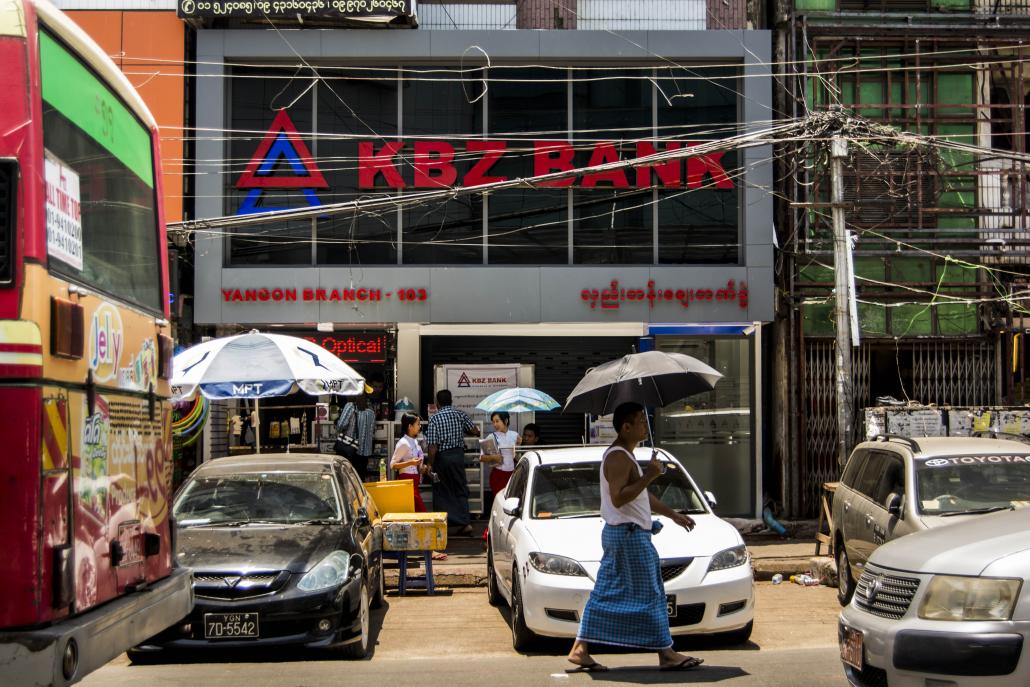
Maro Verli / Frontier
However, introducing more modern forms of collateral, such as cash flow lending or receivables and inventory finance, will also run up against Myanmar’s shortage of human resources.
“Most of the banks don’t have seasoned staff who can go out and do cash flow analysis, and on the other hand few customers are prepared to provide information in such a way that good cash flow analysis can be done,” said Tom Moyes, the Asian Development Bank’s senior access-to-finance adviser to the Mekong Business Initiative.
A first step will be getting Myanmar companies, especially small and medium-sized enterprises, to start following more transparent accounting practices and stop avoiding their taxes. The potential to access bank lending will act as a strong incentive to improving tax compliance and financial reporting.
Another key obstacle to broadening the banks’ credit portfolio is the CBM’s inflexible interest rate structure. “We want an easing of the interest rates,” said U Kyaw Lynn, CEO of CB Bank. “It should be based on risk, not one rate for all loans. High risks should have high returns. In our country, some people think SME lending should be less than the normal rate. I think it should not be [lower]. High risk – high returns. This is true all over the world.”
The NLD is facing its own human resource challenges. The new government is keen to get more loans to the agriculture sector, which accounts for 70 percent of the population. So far its economic team is concentrating primarily on boosting the role of the lumbering Myanmar Agriculture Development Bank (MADB) rather than encouraging private banks to pursue more innovative lending.
“It’s Fabian socialism,” said Moyes. “They think the solution to agriculture finance is for banks to make cheap loans to smallholder farmers. But what you need to do is get credit and liquidity into the value chains; the commercial value chains need financing from top to bottom, not just at the smallholder level.”
Ultimately, financial liberalisation in Myanmar will need to confront not only Myanmar’s recent history of demonetisations and banking crisis, but also Myanmar culture, according to one seasoned observer. “The culture here is we like to nanny things,” Daw Thiri Thant Mon, managing director and co-founder of Sandanila, an investment advisory group, said at the Myanmar Summit.
“So I think there needs to be, on the side of the authorities, a little courage mixed with a little faith – faith that the private enterprises will be able to learn how to manage themselves, wrapped up with accountability – with accountability being a rather loose wrapping.”
This article originally appeared in Frontier Myanmar’s Banking and Finance special edition, published in July 2016.


